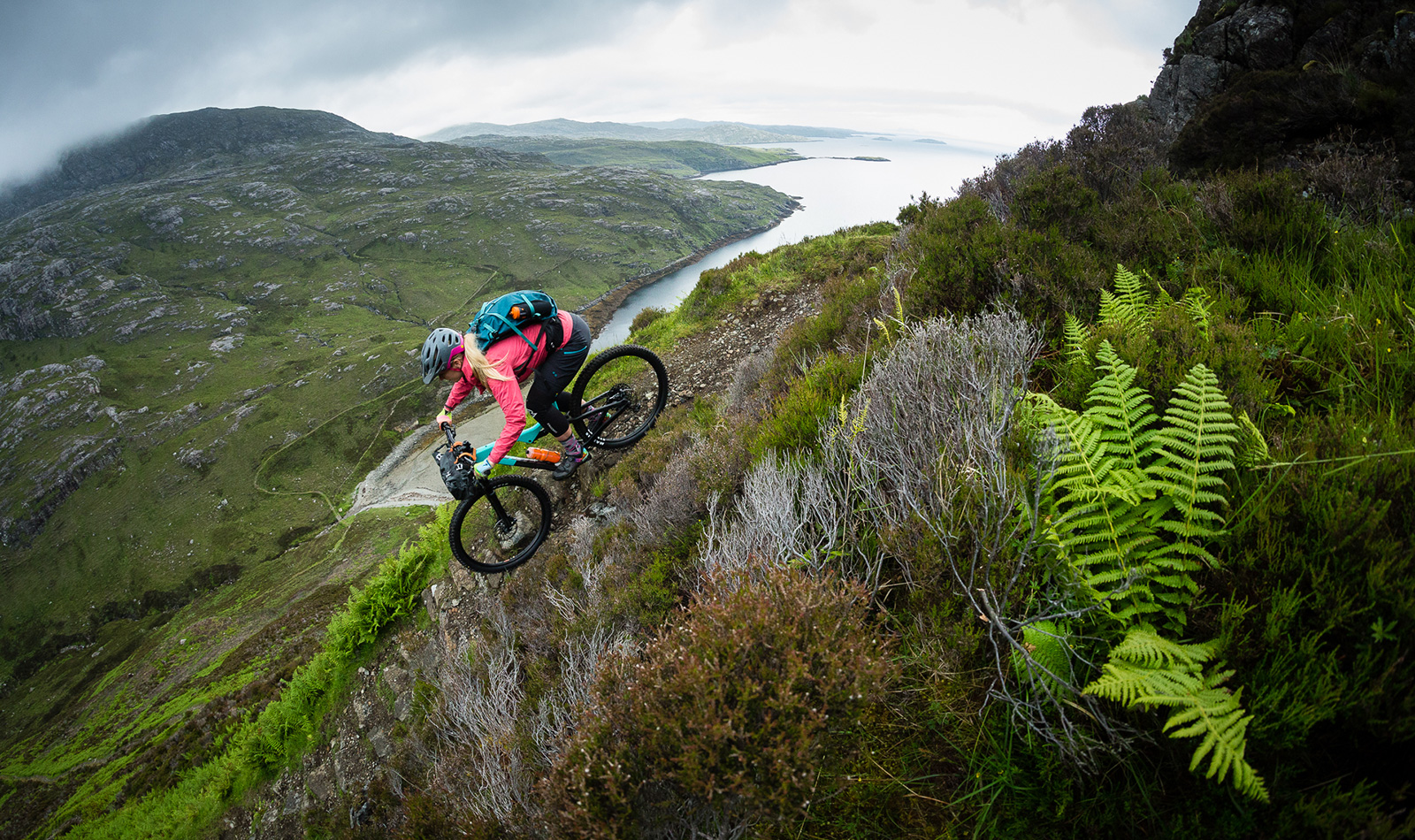The Postman
A true tale of community, survival, love and mountain biking
Written by Tom Hill // Photography by Tristan Tinn // Film by Sam Needham
Supported by Ortlieb and Salsa Cycles
By stripping back the interference of everyday life we were left with what felt important – community, passion, wildness… and playing on bikes.
I stand at the end of the concrete slipway, looking out over a mercury sea. A lone seal pops its head through the silken surface, turning with curiosity, before slipping back into the Hebridean waters. Low clouds hang with all the weight of Harris Tweed across half the sky. The remainder have the blanket tugged back, and the late dusk of a Western Isles July illuminates the craggy coastline surrounding this small harbour.
At my back is the house of Kenny Mackay and his wife Moira, who are in their eighties. I imagine the pair looking out over an identical but forever dynamic view over the preceding decades. Little has changed inland, either, except for one feature. A strip of tarmac road now drops steeply into the village of Rhenigidale (or Rèinigeadal in its original Gaelic spelling). This road was built as recently as 1990, making this small group of houses the last to be connected to the UK road network.
***
Our journey here had more than one purpose. Objectively, we were here to ride the path that Kenny, then the village postman, had walked three times a week – between Rhenigidale and Tarbert – to deliver the mail, news, supplies, and more. This short section of singletrack had a reputation for hosting some of the best and most spectacular mountain biking in the UK. Invitation in itself, but we also wanted to talk to Kenny and find out more about the track, his experiences and life in the community. We ended up leaving with more than that, having gained a deeper understanding of the value of connections – both physical and emotional – in our world. By stripping back the interference of everyday life we were left with what felt important – community, passion, wildness… and playing on bikes.
The population density of the UK is 281 people per square kilometre. It’s hard to imagine finding isolation on our small cluster of islands, yet there are still pockets that deliver a true sense of remoteness. We may achieve momentary escape in our local woods, or the lesser-known hills of our national parks, but a truer sense of seclusion requires a little more effort. Simply to reach Harris took us 12 hours of driving and a ferry journey.
As the crow flies, Rhenigidale is less than 10km from Tarbert, a small village by any standards. In fact, the Postman’s Path follows this route. Dizzying switchbacks and steep gradients – all exposed to the harsh climate – bely the fact that this is the path of least resistance.
To drive there, though, the A859 – the backbone of Harris – swings inland. It passes under the foreboding Clisham, highest peak on the island. On cue, the weather closed in as we climbed. As we stared out of the rain-lashed window of the van, the hillsides looked truly remote, bleak and largely empty of life, save for the odd sheep sheltering behind a rock. We turned right and along the road that Kenny had campaigned vociferously for, descending then climbing once more, through a cleft blasted out of bedrock to make way for this single lane of tarmac. The road that saved the community.

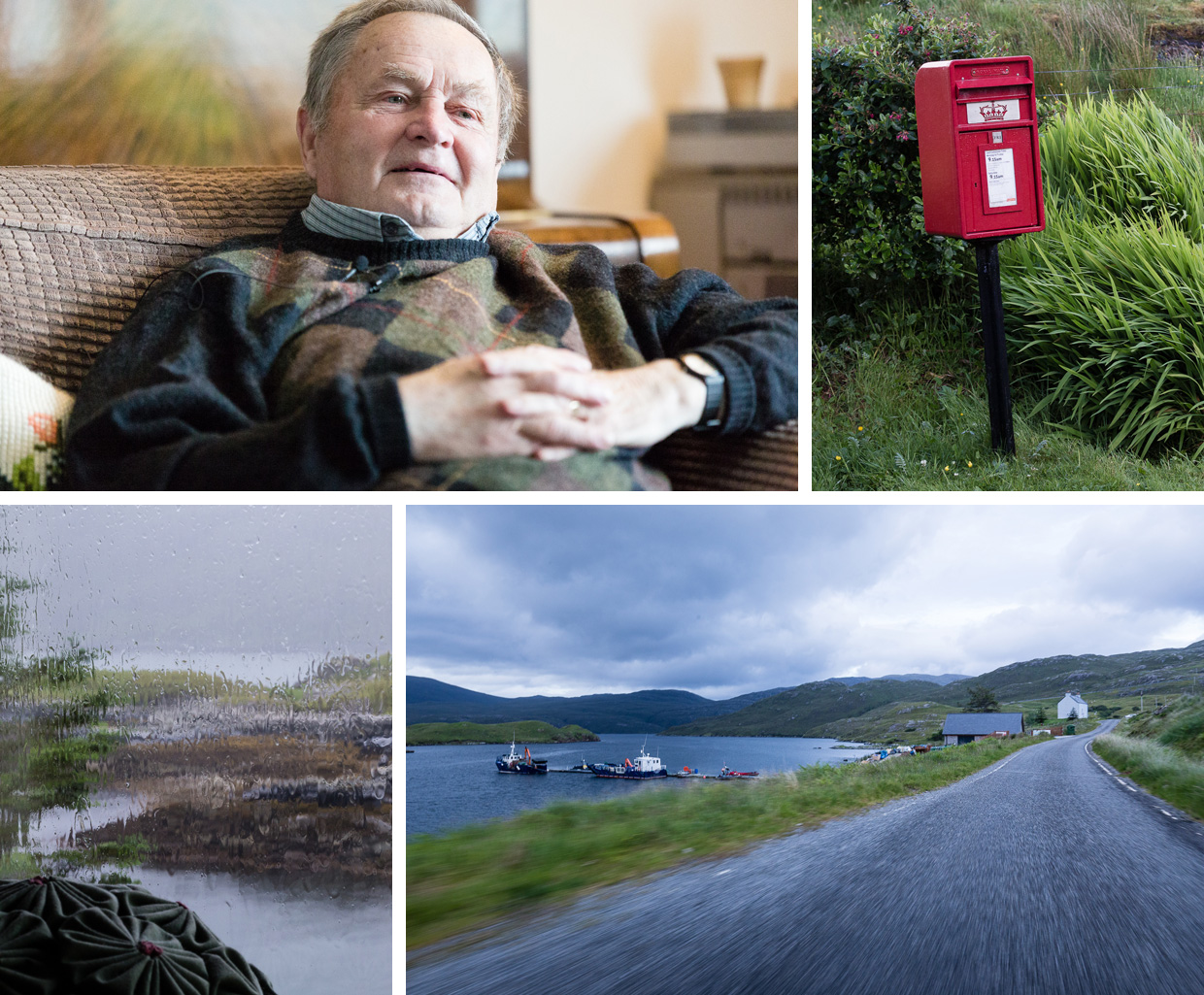
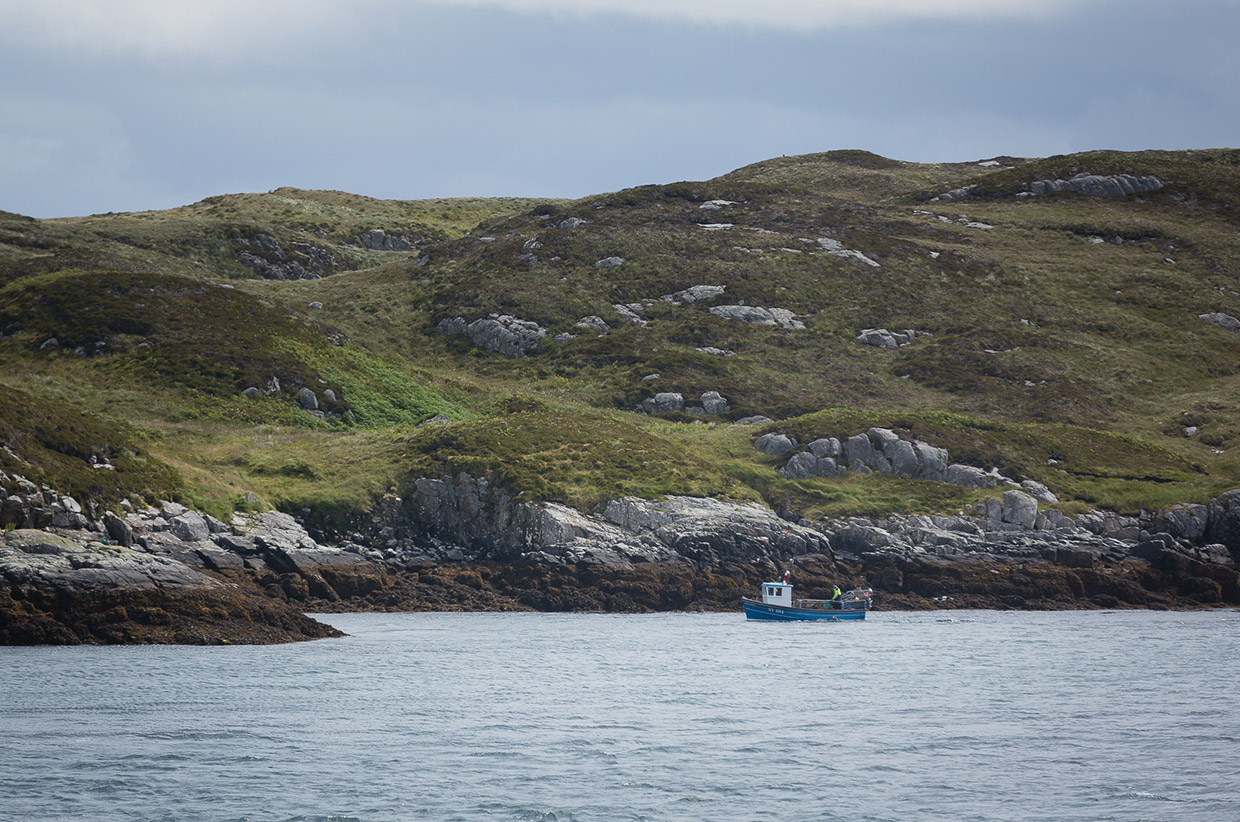
Sitting down in Kenny’s living room, tea brewing and listening to the background static of rain against the window, I wanted to know more about what Rhenigidale was like before the road. My mental framing of the question was about the number of houses, the way of life. Kenny’s answer caught me off guard. He talked about the closeness of the residents, the way they helped each other and shared responsibilities, keeping the village alive.
‘The one main benefit of it being isolated was that we all worked together and helped each other. No-one was any better than their neighbour.’
When there is no shop, doctor, or pub, the community becomes central. Both Kenny and Moira spoke with fondness but no sentimentality of the old times. Day-to-day existence was hard. It’s a mark of how remote Rhenigidale really was when farming on the Isle of Skye was thought of as a move to the bright lights. The postman played a central role far beyond delivering the mail. On any given day his bag would carry not only letters from loved ones but also medication and news of the outside world. For 20 years, Kenny was the connection. And it was from this position he could see that something had to change.
Leaning back into his armchair, Kenny spoke quietly, but with a surety in his voice. This is a man who spent decades campaigning for the road to Rhenigidale. He was quick to find humour in the situation, recalling the time a new postmaster suggested he get a van to make his round more efficient – ‘I’ll need a road first!’ – but also keen to spell out the gravity of the village’s position. By the 1980s, only four houses remained inhabited. The people that stayed lived a strange existence. Despite or maybe because of their isolation, they were increasingly dependent on others. If they fell ill, then helicopter rescue was necessary. Simple deliveries of food were challenging and dangerous as boats struggled to navigate rough seas. As we chatted, I flicked through the hundreds of newspaper clippings that the pair had saved up, charting the history of the village’s campaign. The false starts and politics, never giving in. They didn’t dare believe it would happen until the day the road opened, but it did. And with it, Rhenigidale was sustained, yet somehow a different place. The ‘postman’s path’ was stripped of its purpose, but it remained, ready for those who chose – rather than needed – to travel it.
Kenny spoke quietly, but with a surety in his voice. This is a man who spent decades campaigning for the road to Rhenigidale. He was quick to find humour in the situation, recalling the time a new postmaster suggested he get a van to make his round more efficient – ‘I’ll need a road first!’

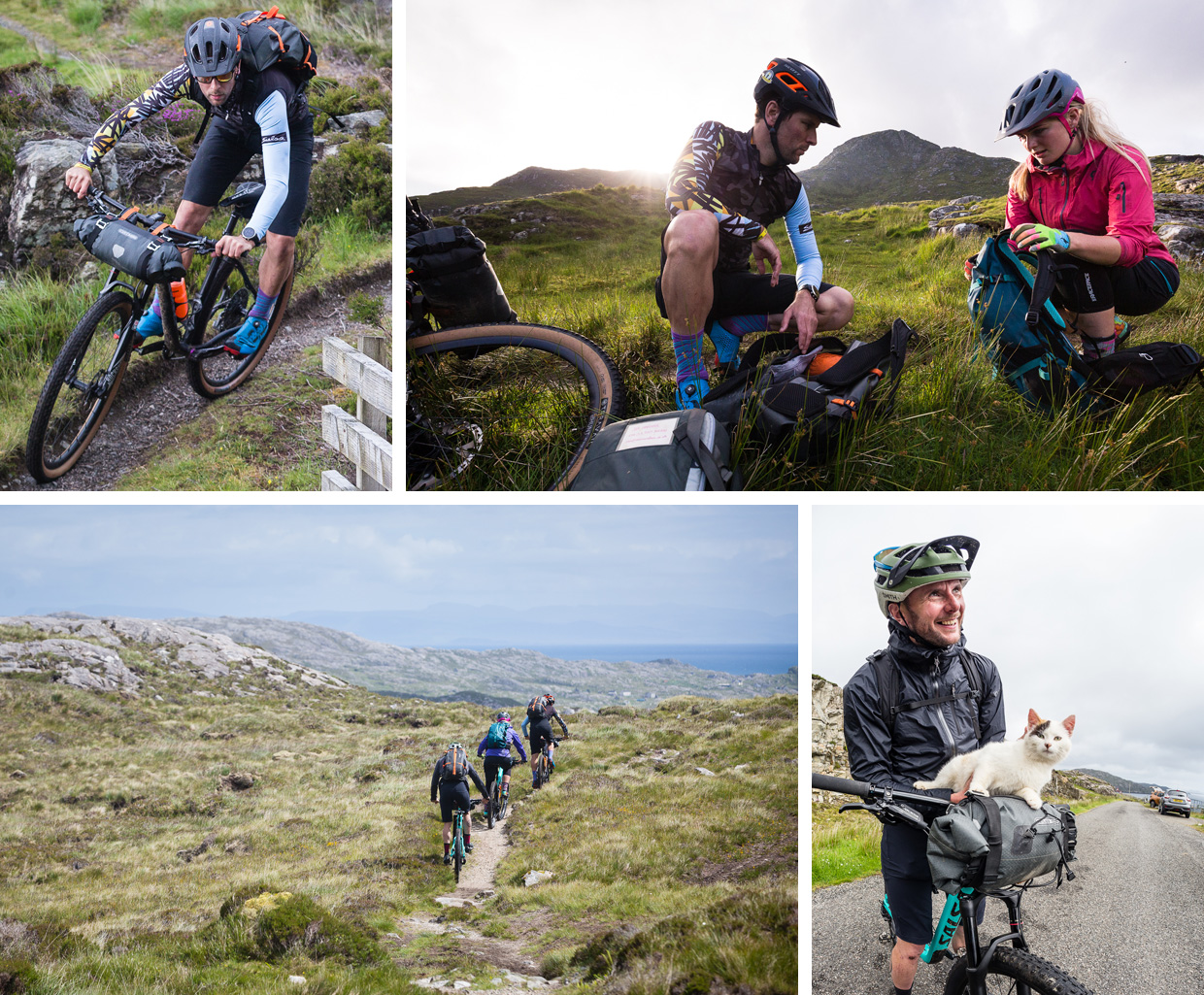
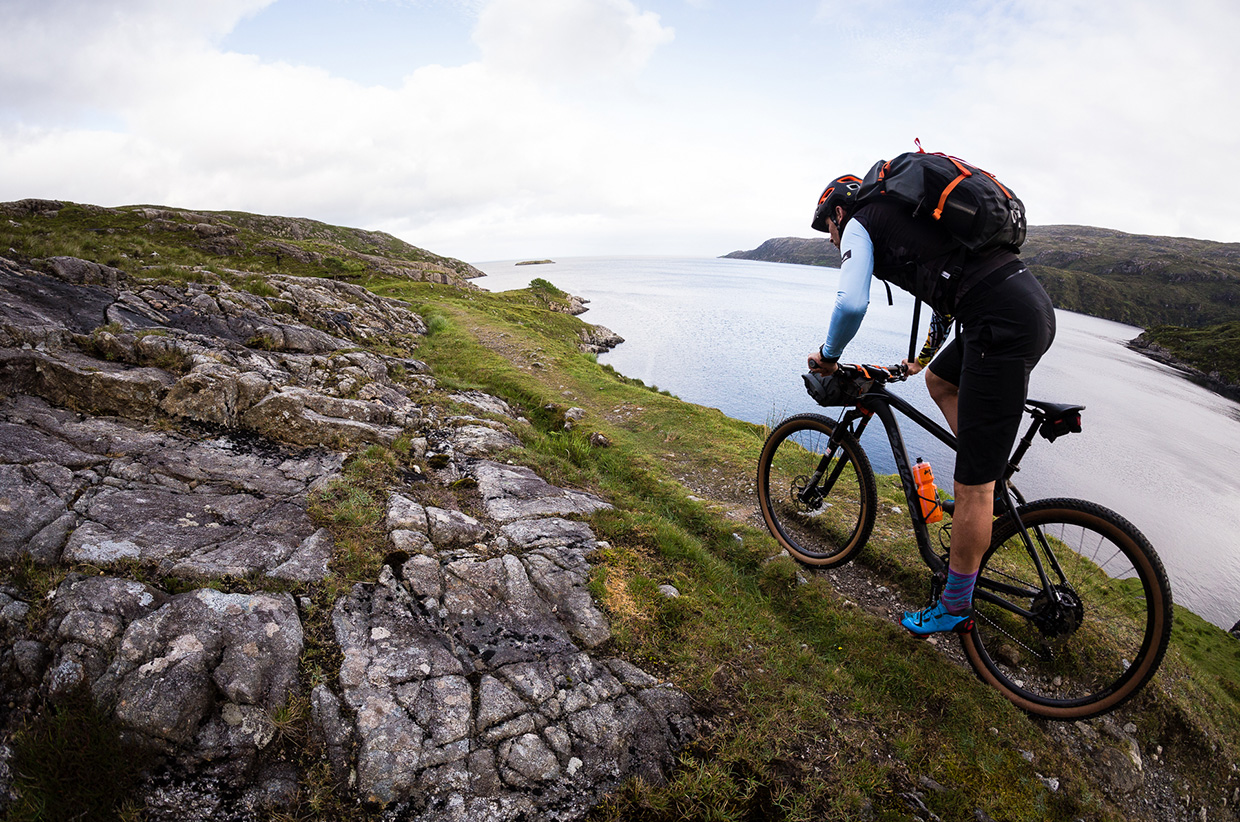
Squalls of rain punched free of boiling, grey clouds, blustering winds throwing the water down with a little more venom each time. Drops drummed against my waterproof and I watched as miniature rivers of rainwater flowed down the contours of the jacket.
We started riding from Rhenigidale, climbing tarmac for 100m before turning on to a track just wide enough for single-file footsteps or tyre tracks. With the coast on our left, the track contoured above cliffs and around small coves. I stared down, not just to the sea, but through the still and clear water, strangely calm despite the brooding weather. We passed through the remnants of the long-abandoned buildings of Gèarraidh Lotaigear, just a few hundred metres from the start of the path and once home to the only shop in Rhenigidale. For those who have spent much time in the Highlands and Islands of Scotland, the sight is familiar. Footprints of subsistence farms and villages are scattered across the country, marking where whole communities were lost to the Clearances of the 18th and early 19th centuries, with landowners evicting tenant farmers. The story is more complex here; Rhenigidale expanded due to the Clearances, then shrank in the late 1800s as residents emigrated to Canada. It takes little imagination to picture the buildings’ former inhabitants walking down to the bay to fish, or to the streams behind the house to collect drinking water. We were riding not just in Kenny’s footprints, but in the generations of small communities who made a successful – if hard – living all along the coast.
Squalls of rain punched free of boiling, grey clouds, blustering winds throwing the water down with a little more venom each time. Drops drummed against my waterproof and I watched as miniature rivers of rainwater flowed down the contours of the jacket. I hate to think of the conditions that Kenny endured, but endure them he did. Perhaps he carried a greater weight than the sack of mail, with the knowledge that walking this path was a lifeline in its truest sense.
‘Once it was a horrendous storm and I hadn’t got very far, but I got blown off my feet, so I turned back home,’ he had told us.
Once, in all his years, did the weather get the better of him. Once. I ignored the sting of rain against my bare legs and kept pedalling. We rode as a tight three, finding a natural flow over bedrock and along sinuous singletrack. The descent down to the head of Loch Trolamaraig is steep and switchbacked, ending at a wooden bridge across a stream. The water flowing into the loch hasn’t travelled far. A kilometre up the glen and it pours down into another sea loch. Even after spending hours staring at the map of Harris, I get confused by a topography that is as dominated by lochs, lochans, and huge sea inlets as it is land.
We paused at the small bay, aware that our next task would be to shoulder our bikes and hike up and out. An fhaolainn, or stony beach. There are over 100 place names covering the area just north of Rhenigidale to just south of the bay. Most of them are descriptive: the Big Ledge (Am palla mòr) and the White Waterfall (An eas gheal). Others point clues to the people who called this area home: Nostar’s big pasture (Geàrraidh mhòr Nòstar) and the Little Woman’s Bothy (Bothag a’ Chreabhag). A few ask more questions than they answer: the Ridge of Disgust (Druim a’ ghràin) and Fair Rock of Judgement Hollow (Creag bhàn lag a’ bhinn). When your known world extends not much further than the eye can see, it makes sense that every feature has a name and is known intimately by all. I pondered my own local area and lost track of street names quickly. Maybe what I have gained in living in a globalised world I have lost at a local level.

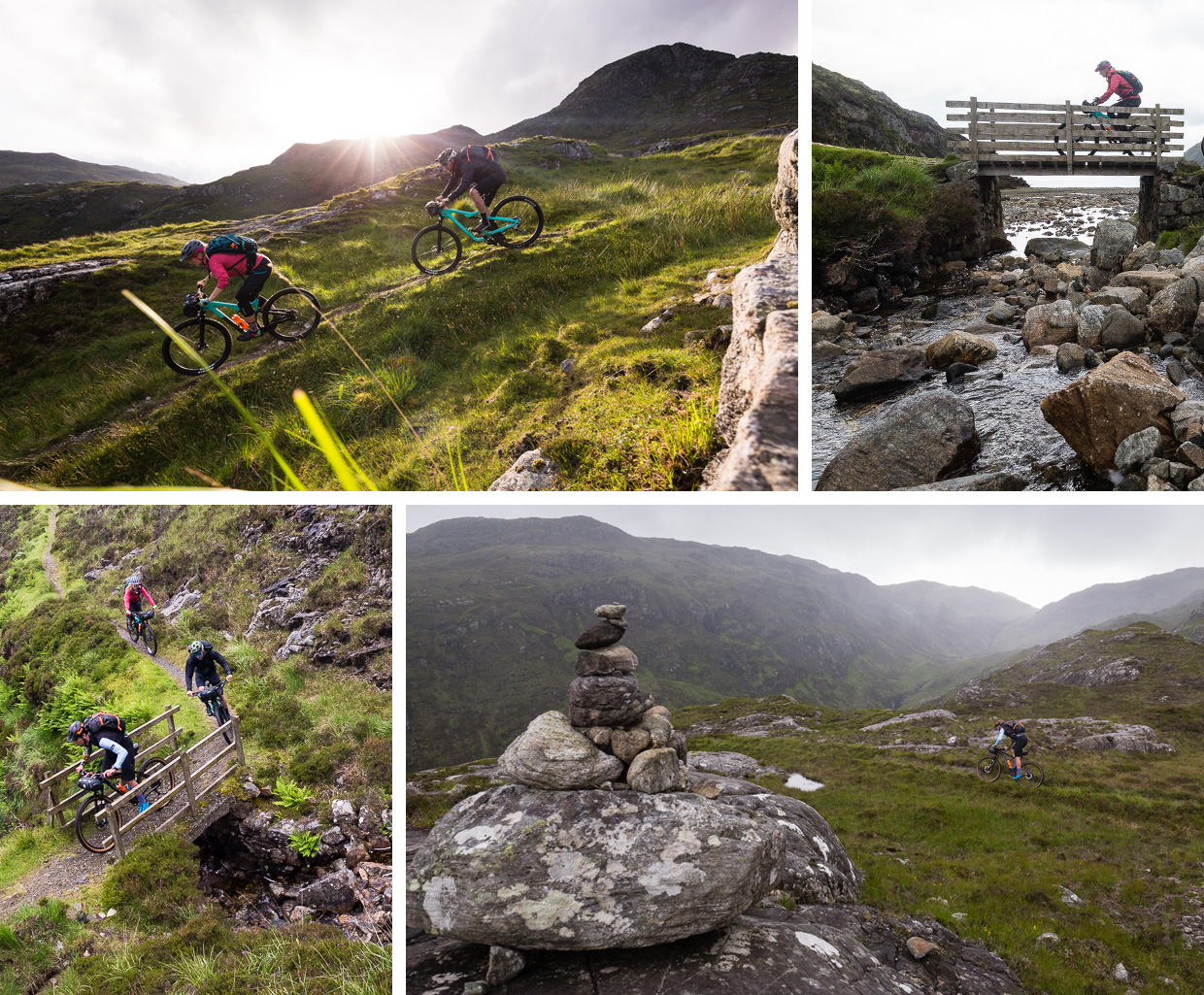
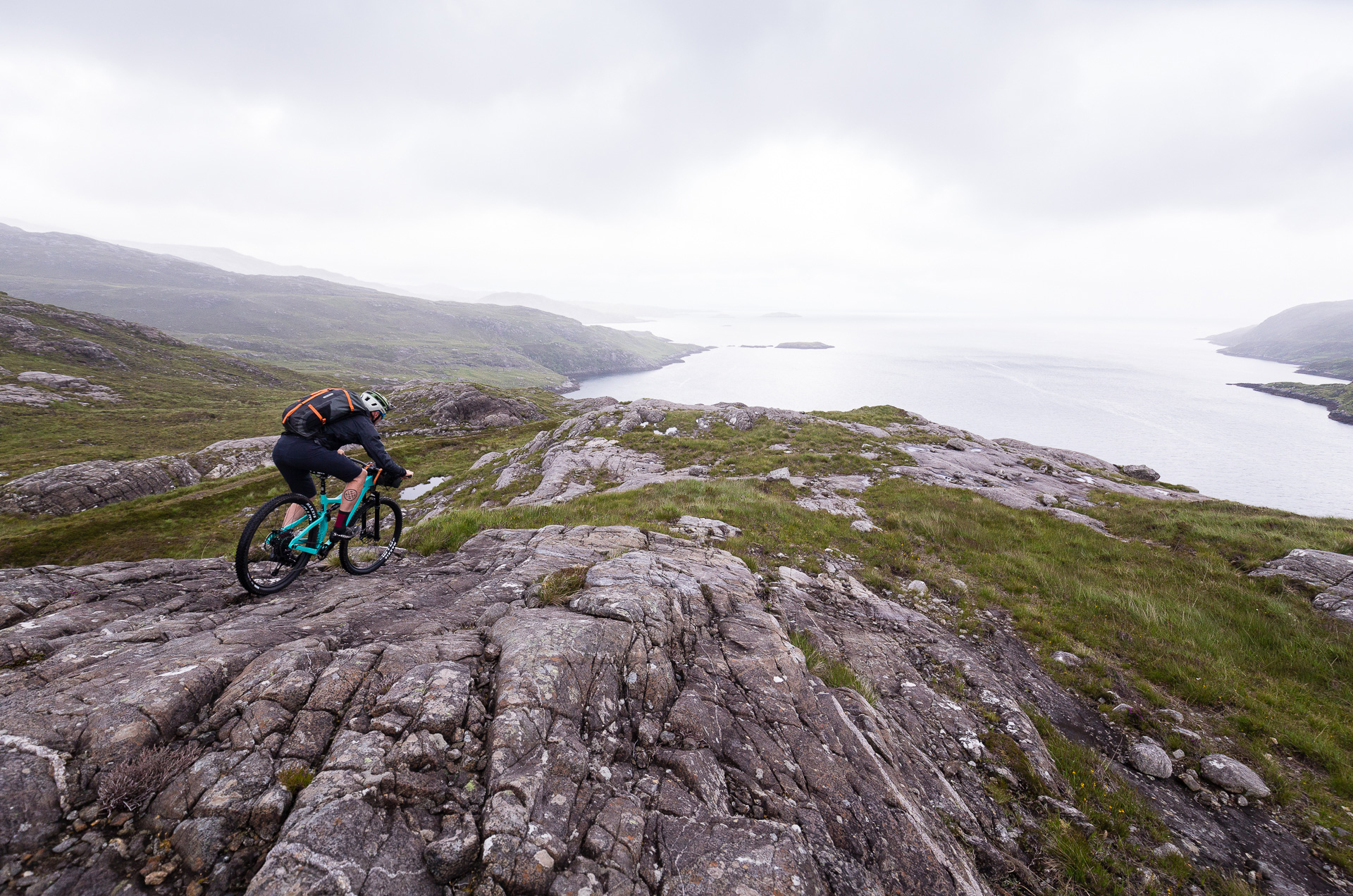
The climb didn’t take long. The whole ride was barely 5km of off-road between tarmac, with another 3km to Tarbert. Far enough when carrying a mail sack through winter storms, though. The rest of the ride was as engaging as what had passed, as we left the coast briefly and crossed a bleak headland, always turning, following singletrack that sought out the easiest path through the rocks and bog. It was truly playful riding, and worth the trip in its own right – but, like Kenny’s post bag, it carried with it a greater weight. It is impossible to separate the trail from its history and the sense of meaning this brings. We all felt a greater connection with Rhenigidale’s story as a result of riding the trail. And so, too, the ride meant more as a result of knowing our route’s history.
Usually I try to avoid out-and-back rides, always keen to see something new. On this occasion, nothing else would have felt right. We doubled back and returned, just as Kenny would have. Our bags were no fuller, but felt full in every other sense of the word. Full of admiration, full of a sense of place.
***
Instead of walking back up the short track to the road, I skirt a promontory and follow its ridgeline until I am high above the cluster of houses that make up modern-day Rhenigidale, repeatedly looking back for another glimpse of the seal. I intersperse hiking with running, not due to any sense of urgency, but simply to feel the cooling evening air hit the bottom of my lungs. The silver grass brushes against my legs; trainers squelch in patches of softer ground.
And there I stand for a while, looking down on the village. There’s a handful of cars parked, and house windows glow with life. It feels homely, despite its wild setting. Perhaps that is what makes it so special. I can certainly understand why Kenny, Moira, and the other residents fought so hard to stay – and I don’t feel quite ready to leave. Rhenigidale may not be as remote as it once was, but in a busy world it still feels like a much-needed escape.
One last lungful of air and I walk down to the road.
This project was made possible by:
Lyon Cycle
Salsa Cycles
Ortleib
Written by Tom Hill // @24tom
Photography by Tristan Tinn // @tristantinn
Film by Sam Needham // @samneedham_photo
Riders: Tom Hill // Lucy Allen // Scot Easter



